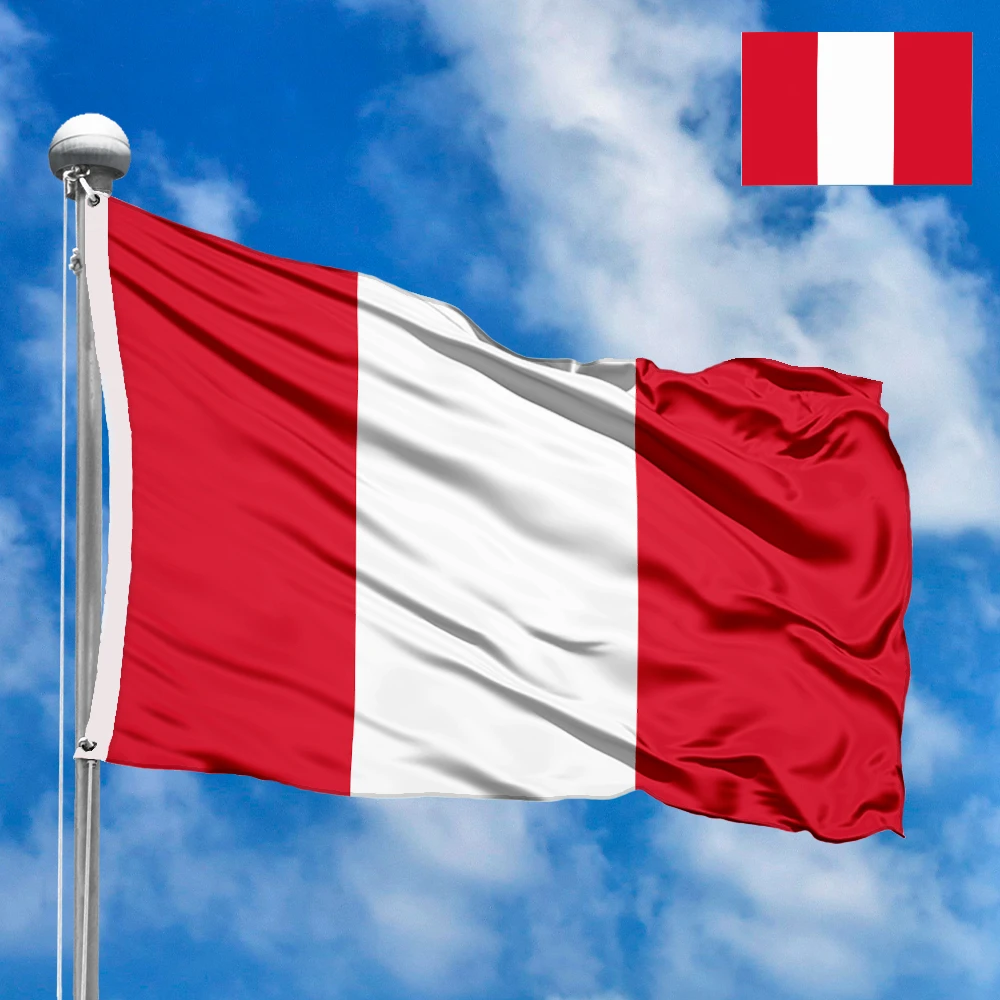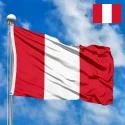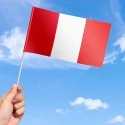The flag of Peru is more than just a national symbol; it is a reflection of the country's glorious history, its struggle for independence, and its unique natural wealth. Its simple yet deeply symbolic design consists of three vertical stripes—red, white, and red—and was officially adopted in 1825. The colors of the flag have a legendary origin, and the central coat of arms embodies the essence of the Peruvian nation.
A Detailed Look at the Flag's Design and Symbolism
The national flag of Peru consists of three vertical bands of equal width. The outer bands are red, and the central band is white. This design, known as the "civil flag," is the most common version. The state flag and the war flag are distinguished by the addition of the Peruvian Coat of Arms in the center of the white stripe.
The colors of the flag hold profound meaning for the Peruvian people:
-
Red: The red color symbolizes the blood shed by the heroes who fought for the nation's independence. It represents the courage, sacrifice, and valor of the patriots who dedicated their lives to liberating Peru from Spanish rule. Red is also a color associated with the Incan Empire, linking the modern nation to its pre-Columbian past.
-
White: The white stripe represents peace, justice, and dignity. It symbolizes the purity of the nation’s aspirations and the peace that was achieved after the long struggle for freedom. White stands for the country's sovereignty and the righteous path its people have chosen.
The Peruvian Coat of Arms
The state flag, used by official government institutions, features the national coat of arms in the center of the white stripe. The shield is divided into three sections, each representing a crucial aspect of Peru's national wealth:
-
The Vicuña: In the upper-left field, there is a vicuña, a camelid native to the Andes. It symbolizes the national fauna and the country's rich wildlife. The vicuña is also a symbol of freedom and resilience.
-
The Cinchona Tree: In the upper-right field, a cinchona tree is depicted. This tree, native to Peru, is the source of quinine, a medicine used to treat malaria. It symbolizes the national flora and the country's vast natural resources, particularly its medicinal wealth.
-
The Cornucopia: In the bottom field, a cornucopia is shown, spilling out a cascade of gold and silver coins. This symbolizes the mineral wealth of Peru, including the historical richness from the silver mines and the potential for future prosperity.
The History and Creation of the Flag
The origin of the Peruvian flag is steeped in a captivating legend. The first flag was created by General José de San Martín, the great liberator of South America. According to the story, after landing in Peru in 1820, San Martín fell asleep under a palm tree in the Bay of Paracas. When he awoke, he saw a flock of flamingos with red wings and white chests flying over him. Inspired by this sight, he declared that the colors of the flamingos would be the colors of Peru's flag.
San Martín's original design, adopted in 1820, was different from the current one. It featured two diagonal lines that formed four triangles, with a coat of arms in the center. The current design of three vertical stripes was established later to simplify production and avoid confusion with other flags. The final design, with the iconic red-white-red pattern, was adopted on February 25, 1825, under the leadership of Simón Bolívar, another key figure in the struggle for independence. The coat of arms was officially added to the state flag at this time.
Meaning and Significance for Residents
For the people of Peru, the flag is a potent symbol of patriotism, national identity, and cultural heritage. The red and white colors are not just colors; they are a tribute to the ancestors who fought for freedom and a reminder of the country's unique geographical and historical identity. The flag is proudly displayed during national holidays, particularly on Fiestas Patrias (July 28-29), which celebrates the nation’s independence, and on Día de la Bandera (Flag Day) on June 7th. The coat of arms on the state flag serves as a reminder of the country's abundant resources and its promise of a prosperous future. The flag is a unifying symbol for a diverse population, connecting them to a shared past and a common destiny.
Interesting Facts
-
The legend of the flamingos is one of the most famous stories in Peruvian history, and it is a key part of the national identity.
-
The civil flag (without the coat of arms) is used by private citizens, while the state flag is reserved for public buildings and official occasions.
-
The War Flag (Bandera de Guerra) is a third variant of the flag. It includes the coat of arms but also features a wreath of palm and laurel branches, and is used by the Peruvian armed forces.
-
The red and white colors of the Peruvian flag are also found on the flags of other nations, such as Canada and Austria, but with completely different meanings and origins.
-
The official dimensions of the flag are regulated by law, ensuring consistency in its use across the country.
In the demonstration images, full-size flags are shown with proportions of 2:3, and hand-held flags with proportions of 1:2.






 Waving flag
Waving flag
 Sizes:
Sizes:
 Round flag
Round flag
 Sizes:
Sizes:
 Rectangular flag 2:3
Rectangular flag 2:3
 Sizes:
Sizes: